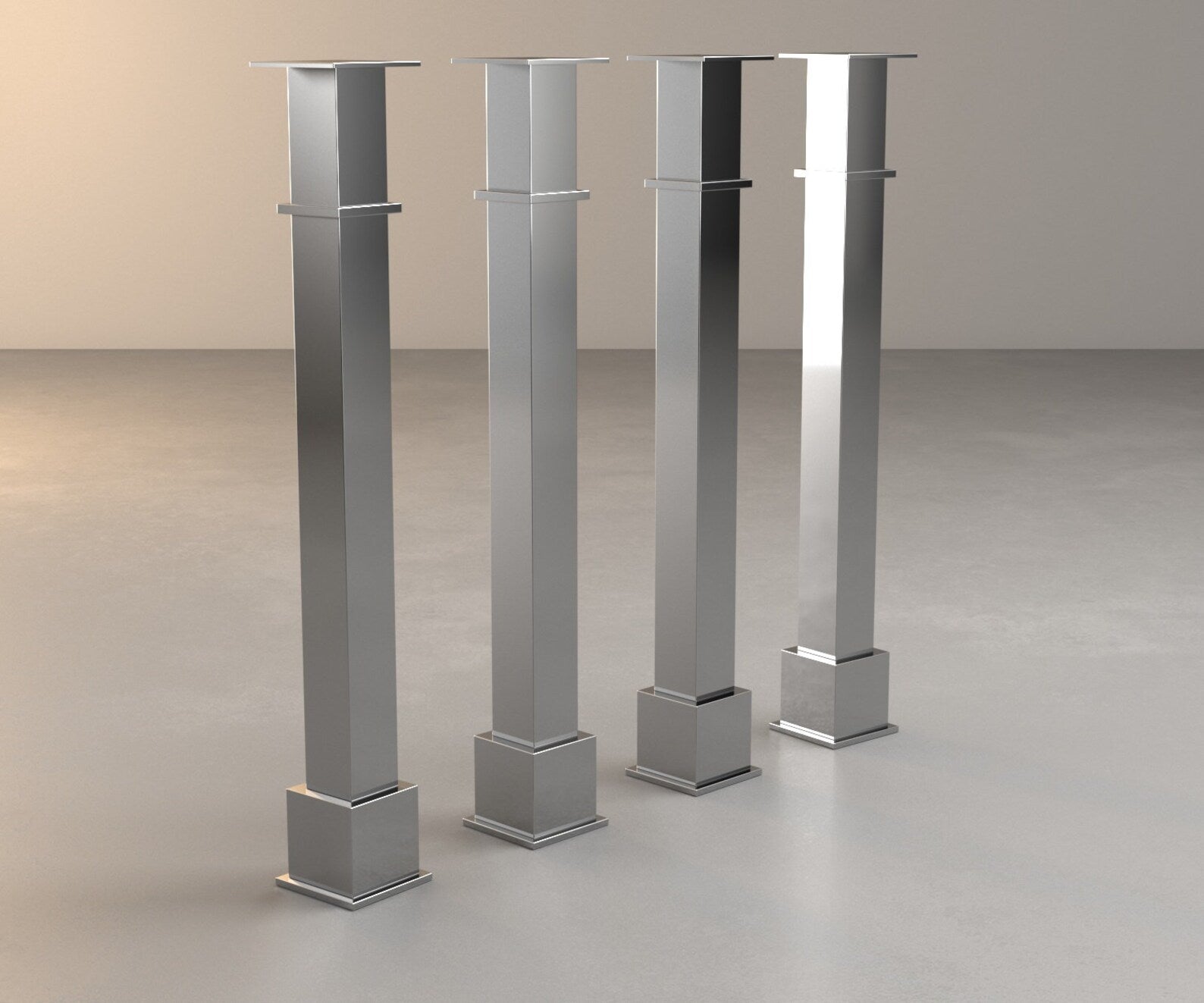Elevate Your Space with Trendy Legs For Kitchen Island Layouts
Elevate Your Space with Trendy Legs For Kitchen Island Layouts
Blog Article
An Overview to Choosing the Perfect Legs For Kitchen Area Island for Your Home
Choosing the suitable legs for your cooking area island is a nuanced choice that affects both the performance and aesthetic appeal of this main room. As you consider these components, it comes to be noticeable that the ideal legs can transform not only the appearance of your kitchen however also its usability for years to come.

Comprehending Kitchen Island Legs
When choosing legs for a cooking area island, it's necessary to comprehend their practical and aesthetic functions in the total layout. The legs act as a critical support system, ensuring security and sturdiness for the island, which frequently operates as an office, eating area, or collecting place. Consequently, the choice of product and building and construction strategy should be durable enough to stand up to daily usage and potential wear.
Along with their architectural responsibilities, legs add substantially to the island's aesthetic appeal. They can enhance the kitchen area's design, whether via traditional, modern, or diverse styles. The elevation and percentage of the legs are likewise crucial considerations; they have to harmonize with the island's counter top elevation while guaranteeing comfortable seating for those making use of the room.
Moreover, the leg style can influence the general flow of the cooking area. Open, airy leg designs can create a feeling of lightness, while solid, considerable legs may convey a more based and secure visual - Legs For Kitchen Island. Comprehending these visual and practical facets will guide property owners in making informed options that enhance their cooking area's style and improve its use
Popular Styles and Products
The option of legs for a cooking area island includes a selection of preferred designs and materials, each offering unique qualities that can improve both functionality and aesthetics. Amongst the most popular designs are modern, rustic, and conventional. Contemporary legs often include streamlined, minimalist layouts that emphasize simplicity and tidy lines, making them suitable for modern-day kitchen areas. Rustic styles, on the various other hand, accept natural components and frequently showcase reclaimed timber or troubled coatings, adding warmth and appeal to the area. Conventional legs usually exhibit ornate information and workmanship, enhancing traditional kitchen layouts.

Height and Stability Factors To Consider

The legs of the kitchen island need to supply appropriate support, making certain that the structure can withstand day-to-day usage without shifting or tottering. Material selection plays a substantial role in stability; steel legs, for circumstances, tend to use greater stamina contrasted to wood.
Matching Your Kitchen Area Aesthetic
Picking the right legs for your kitchen area island goes past capability; it also plays a significant function in the total aesthetic of the room (Legs For Kitchen Island). When picking legs, take into consideration the layout style of your kitchen.
Color is an additional important factor. Legs that complement or contrast with your island's surface and bordering cabinetry can produce aesthetic harmony or striking prime focus. Pairing dark wood legs with a light marble countertop look here can include depth and rate of interest. Furthermore, consider the finish of the legs; matte, shiny, or distinctive coatings can significantly impact the total feel of the cooking area.
Installation and Maintenance Tips
Mounting kitchen island legs requires cautious focus to detail to make certain both stability and visual charm. Make use of a stud finder to find wall studs if you are connecting the legs to a wall surface or using braces for added assistance.
When safeguarding the legs, utilize top quality screws and, if essential, wood glue for added toughness. For steel legs, guarantee that you are making use of appropriate anchors and devices to stop damage to your floor covering. It is suggested click now to check for levelness after installment, making changes as required to avoid wobbling.
Maintenance is just as essential for longevity - Legs For Kitchen Island. Routinely inspect the legs for any type of signs of wear or helping to loosen, particularly in high-traffic locations. Tidy the legs with a suitable cleaner, avoiding rough materials that may scrape the surface. For wooden legs, think about using a wood conditioner regularly to keep click to read their finish. By following these installment and upkeep suggestions, you can ensure that your cooking area island legs stay both useful and aesthetically appealing.
Verdict
In verdict, choosing the suitable legs for a cooking area island demands cautious consideration of height, security, and visual compatibility. By selecting suitable products and styles that line up with the overall kitchen layout, performance can be boosted while preserving aesthetic appeal. Appropriate setup and continuous upkeep even more add to the resilience and long life of the cooking area island. Eventually, thoughtful leg selection plays an essential duty in elevating both the practicality and layout of the kitchen area space.
When choosing legs for a kitchen area island, it's crucial to understand their useful and visual duties in the total design. Open, airy leg styles can create a feeling of agility, while solid, substantial legs may share an extra grounded and steady visual. The legs of the kitchen area island must provide appropriate assistance, making sure that the framework can endure day-to-day use without wobbling or moving.Mounting kitchen island legs needs careful focus to information to ensure both security and aesthetic appeal.In conclusion, choosing the proper legs for a kitchen island requires cautious factor to consider of elevation, security, and aesthetic compatibility.
Report this page